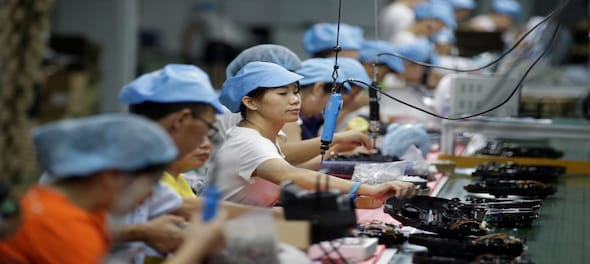
After a strong start to 2023, Chinese economic activity has sharply fallen short of expectations. Exports have collapsed. Consumption, production and investment have slowed, while inflation levelled out and the unemployment rate edged up.
The Chinese renminbi hit new lows in August and September 2023, driven by worries about the domestic economy. That said, despite its decelerating growth in 2023, China continues to be the world’s manufacturing hub so much so that its travails have triggered panic waves across the globe.
China and global economy
Given the deep interconnection between the global economy and the Chinese economy, there is fear among nations that global growth will further be adversely impacted due to the troubled Chinese economy. China has had the distinction of remaining impervious to global crises be it the Asian financial crisis and the global financial crisis. It even managed to somehow stay afloat until 2023, despite the US-China trade war since 2017.
This has given rise to the surface impression that such crises are cyclical in nature and are inherently in the DNA of the Chinese economy. Yet a closer examination would reveal that the crisis in 2023 is vastly different from the ones that the Chinese economy has taken head on in the past and is actually structural in nature.
In its July Politburo meeting, the Communist party of China described its decelerating growth, rising unemployment and slowing consumption as ‘torturous’ testifying to the structural changes needed. The changes required may depend on its worldview of leveraged balance sheets of companies especially in the real estate sector. Following the real estate debacle exemplified by the bankruptcy of Evergrande, the Chinese authorities had to clamp down on unbridled borrowings.
Deng Xiaoping model of FDI backed export-led growth pursued since 1978 seems to have run its course with the tipping point being the Covid epidemic crippling the global economy. Inevitably, China has had to look within for growth which is sadly not happening with unemployment at 21% level, prices plummeting and consumer spending heading South.
To drive and lift consumption, the National Development and Reform Commission (NDRC) came out with 12 wide-ranging measures to boost domestic consumption including encouraging market entities to apply domestic AI technologies to enhance the levels of electronic products, improving the innovation capability of electronic products, cultivating new growth points for consumption and so on. But then it is a vicious cycle —unemployment of a staggering 21% is hardly the time to lift consumption expenditure in the domestic economy. Consumption after all is a function of income.
A parallel is being drawn between the 2008 US subprime crisis and the current Chinese slowdown but the two are not on all fours. While the US crisis triggered a worldwide recession, the Chinese slowdown has been triggered by the worldwide phenomena of Covid pandemic and Russia-Ukraine hostilities.
But the larger point is in an interrelated world, no country can remain insular or immune from outside happenings. That is why the recent Fitch exercise has resulted in lowering of Chinese GDP growth potential for 2023 from 5.3% to 4.6% with a corresponding optimistic outlook for the ten emerging market economies including India, Brazil, Mexico and Indonesia. This was mainly on the back of a greater labour participation in their economies though cynics may pivot and say they all are benefitting on the rebound — filling the void left by China. Be that as it may.
It is not as if the Chinese government is allowing grass to grow under its feet. The government’s 31-point plan released in July 2023 highlights the importance of the private sector and fair competition, eliminating barriers to entry, protecting property rights and drawing private enterprises into national projects.
For China, sectors like technology platforms, electric vehicles, green energy and electronics are now vibrant sources of innovation and growth. While China has the resilience to stage a comeback, the negative perception and propaganda is driving away investments from China.
In August 2023 alone, foreign investors (including institutions) dumped a record $12 billion of stocks listed in Shanghai and Shenzhen, more than any time since the launch of the stock connect scheme in 2014. In defence of declining foreign portfolio investments (FPI) it could be said that FPI by its very nature is fickle and, in any case, does not add directly to the manufacturing capacity of a country.
But then the shying away of capital is happening on the Foreign Direct Investment (FDI) front as well. Foreign investments in China have turned negative for the first time since records began in 1998. China's direct investment liabilities declined by $11.8 billion in the third quarter of 2023.
The decline in FDI has been attributed to China's strained ties with the West and higher interest rates elsewhere. The US and other Western countries have been raising interest rates to contain inflation while China has slashed the rate to pump up the slowing economy. Higher interest rate elsewhere has also prompted capital flight from China.
Indeed, the decline in FDI should ring alarm bells in the Communist party higher echelons as it testifies to structural factors as much as to the cyclical reasons.
— S. Murlidharan is a CA by qualification and writes on economic issues, fiscal and commercial laws. The views expressed in the article are his own.
Read the previous ones here
(Edited by : C H Unnikrishnan)
First Published: Nov 8, 2023 11:37 AM IST
Check out our in-depth Market Coverage, Business News & get real-time Stock Market Updates on CNBC-TV18. Also, Watch our channels CNBC-TV18, CNBC Awaaz and CNBC Bajar Live on-the-go!


'Borrowed' leaders: Congress hits out at AAP for not fielding their own candidates in Punjab
Apr 28, 2024 9:53 PM
EC asks AAP to modify election campaign song and Kejriwal's party is miffed
Apr 28, 2024 9:25 PM

